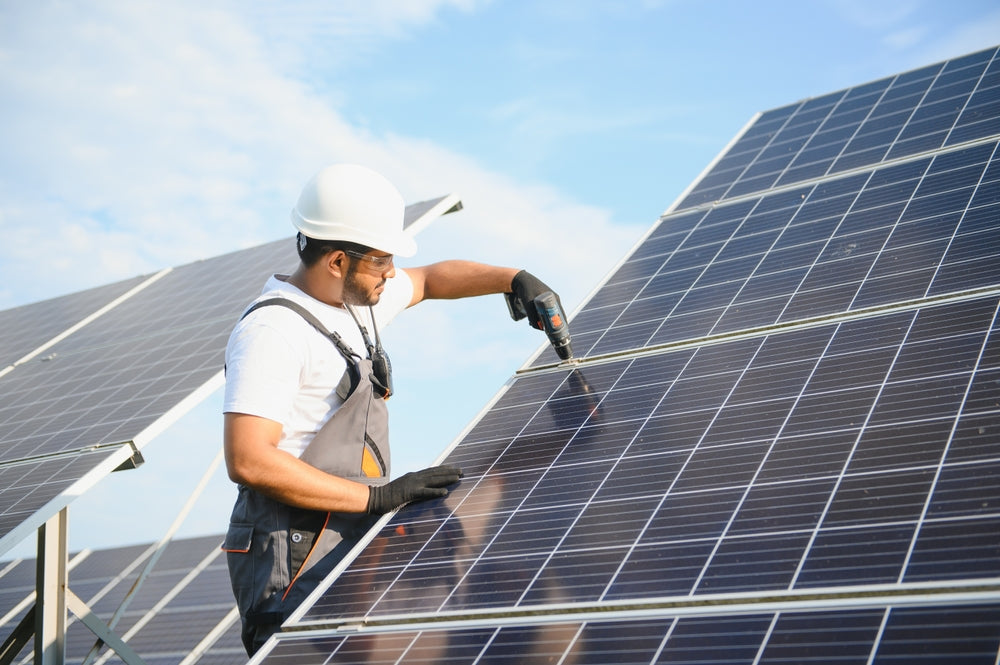
The Evolution of Solar Panel Technology
As solar energy continues to power homes, industries, and cities across the globe, the technology behind solar panels keeps advancing. Today, one of the most important considerations when choosing a solar panel is the type of semiconductor material used in its construction. The two most common types are N-type and P-type solar panels.
At first glance, this may seem like a technical detail. However, the choice between N-type and P-type technology can impact everything from panel efficiency and lifespan to performance in different weather conditions. In this blog, we’ll break down the differences in simple terms so you can make a smart decision when investing in solar power.
Understanding the Basics: What Are N-Type and P-Type Panels?
Let’s start with what makes these two panel types different at a core level. The terms N-type and P-type refer to the way silicon—the base material of most solar panels—is doped, or treated, to create an electric field.
In P-type solar panels, the base layer is positively charged by adding elements like boron to the silicon. These panels have been the industry standard for many years due to their cost-effectiveness and decent efficiency. Most traditional panels fall under this category.
On the other hand, N-type solar panels use a base layer doped with elements like phosphorus, giving it a negative charge. This configuration leads to higher efficiency, better performance in extreme temperatures, and lower degradation rates over time.
Popular brands like Jinko solar panel and astroenergy solar panel have now incorporated N-type technology into their newer product lines, including bifacial solar panel modules. As demand grows for longer-lasting and higher-yielding systems, the shift from P-type to N-type is becoming more noticeable in markets like Pakistan and the Middle East.
In fact, many new high-performance panels available today combine solar panels, bifacial solar panel, Jinko solar panel, astroenergy solar panel technologies with N-type cells to deliver optimal results even in harsh environments.
Efficiency and Power Output: N-Type Takes the Lead
Efficiency is one of the most critical factors when choosing solar panels. Simply put, the more efficient a panel is, the more electricity it generates from the same amount of sunlight.
N-type panels consistently outperform P-type panels in this area. On average, N-type cells offer 20 to 23 percent efficiency, while P-type cells range between 17 to 20 percent. This might seem like a small difference, but over a 25-year lifespan, the additional energy generated can be significant.
Moreover, N-type panels suffer from minimal light-induced degradation (LID), which means they retain their original output levels much better than P-type panels. In contrast, P-type panels often lose a portion of their efficiency within the first few months of exposure to sunlight.
Brands like Jinko solar panel are now offering N-type bifacial solar panel modules that combine high efficiency with dual-side generation. These advanced panels are ideal for users who want to maximize output with limited space.
Durability and Degradation: Longevity That Pays Off
Solar panels are long-term investments, so understanding how they degrade over time is crucial. All panels experience some loss in performance as they age, but the rate at which this happens varies between P-type and N-type.
P-type solar panels typically degrade at a rate of 0.5% to 0.7% per year. That means after 25 years, their output may be reduced to about 80% of their original capacity. These numbers are acceptable, but there’s room for improvement.
N-type solar panels, however, degrade much more slowly. Their degradation rate is often less than 0.3% annually, which means they retain up to 90% of their original output even after 25 years. This improved stability is especially important in high-temperature climates, making N-type panels a great choice for regions like Sindh, Balochistan, and Southern Punjab.
Panels like the astroenergy solar panel with N-type technology are often backed by stronger warranties and deliver reliable long-term performance, making them a safer bet for critical installations.
Temperature Performance and Environmental Tolerance
Temperature plays a major role in panel performance. While solar panels work best under direct sunlight, excessive heat can actually reduce their efficiency.
P-type panels are more susceptible to heat-related losses. Their performance drops significantly as temperatures rise, which is a concern in hot climates. This is particularly important for countries like Pakistan, where temperatures can exceed 40°C in summer.
N-type panels, on the other hand, perform better under extreme conditions. They have a lower temperature coefficient, which means their output doesn’t decline as sharply in the heat. This feature ensures more consistent energy generation throughout the year, even during peak summer months.
If you’re planning an installation in a region with hot and sunny conditions, investing in an N-type bifacial solar panel from brands like Jinko solar panel or astroenergy solar panel could yield better results and more dependable power.
Price vs Value: Understanding the Investment
Let’s talk money. P-type solar panels are more affordable upfront, which makes them a popular choice for residential users and small commercial projects. Their mass availability and long-standing reputation make them easier to source and install.
However, N-type panels—while more expensive initially—offer better value in the long run. Their higher efficiency means fewer panels are needed for the same output. Plus, their lower degradation rates and better warranties reduce the need for maintenance or early replacement.
Over the lifespan of a solar system, N-type panels often prove to be more cost-effective. They can also increase the resale value of a property due to their advanced features and longevity.
Ultimately, the choice depends on your budget, project size, and long-term energy goals. If you're looking to save on upfront costs, P-type might work. But for better performance and durability, N-type is the smarter investment.
Which One Should You Choose?
There’s no universal answer to which panel type is better—it depends on your specific needs. However, here’s a quick summary:
Choose N-Type Panels If:
-
You want maximum efficiency from limited space.
-
You live in a region with high temperatures.
-
You're planning a long-term investment.
-
You value stronger warranties and better performance over time.
-
You're using advanced modules like bifacial solar panel designs.
Choose P-Type Panels If:
-
You have a limited budget.
-
Your installation area has moderate temperatures.
-
You're covering a larger area with more panels.
-
You want a proven, affordable technology for smaller projects.
Final Thoughts: Powering Smarter with the Right Technology
The difference between N-type and P-type solar panels may seem subtle on paper, but it can significantly impact how much energy you generate and how long your system stays efficient. As solar technology continues to evolve, N-type panels are quickly becoming the new standard for performance, especially in demanding climates.
When choosing between solar panels, don’t just focus on price. Consider the full picture: efficiency, degradation, temperature performance, and total return on investment. Brands like Jinko solar panel and astroenergy solar panel now offer advanced bifacial solar panel options with N-type cells—making solar smarter, stronger, and more sustainable.








